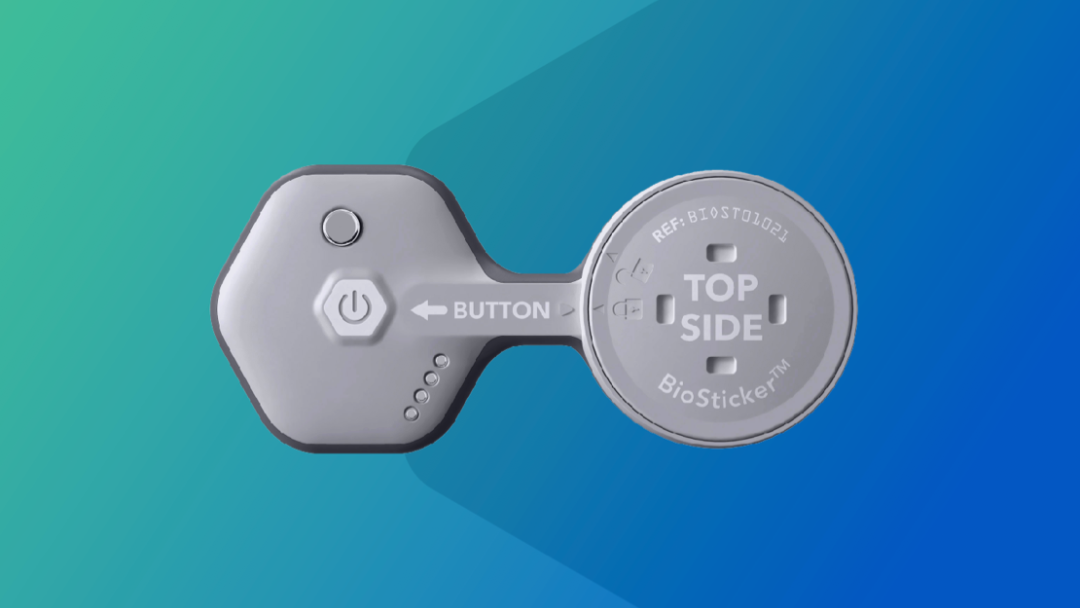The wearable technology industry has grown rapidly in the past few years. The first thing that usually comes to mind when you think of wearable technology is likely smartwatches or fitness trackers, such as those made by Apple and Fitbit. However, many other types of wearable technologies are being developed for commercial and professional use. For example, some wearables monitor heart rhythms, which can facilitate medical diagnoses and monitor response to treatment.
Companies are developing wearables that clinicians can use to monitor patients remotely, which is especially useful now that remote assessment is necessary due to the COVID-19 pandemic. One device that has generated a considerable amount of buzz in recent months is the BioIntelliSense BioSticker.
How the BioSticker Has Revolutionized Wearables
A small and discreet on-body sensor, the BioSticker provides medical-grade monitoring meant for scaling more remote care when paired with the BioIntelliSense Data-as-a-Service platform.
The small device has demonstrated impressive clinical accuracy with a single-use design that is very comfortable for patients and requires virtually no effort on their part. Using advanced analytics software to monitor the stream of data from these devices, the sticker can help predict potential adverse outcomes and give providers adequate time to intervene. This way, patients are only recalled to the clinic when medically necessary, which limits inconveniences and minimizes unnecessary utilization of the medical community. Moreover, the BioSticker device has been approved by the Food & Drug Administration (FDA) for use for up to 30 days with a single sticker.
For patients, the BioSticker has been designed to support a “stick it and forget it” mentality. Patients place the discreet sticker on the upper left chest, while the data is effortlessly captured remotely using the BioIntelliSense system. This strategic placement makes it possible to monitor the usual vital signs (respiratory rate, heart rate, and temperature) along with many other factors. The sticker is capable of tracking body position and sleep status, as well as overall activity levels. In addition, the BioSticker can detect falls and transmit high-resolution gait analysis.
This wide range of data points makes the wearable device a key tool for many different types of providers, including physiatrists, geriatricians, cardiologists, and more. All of the data is available through a patient-specific BioReport so that providers can access it remotely at any time to inform care decisions.
Different Methodologies for Collecting Patient Data
Currently, clinicians can employ the BioSticker in two different ways depending on their needs. The first is the MedEpoch data service, which is valuable for seeing trends over time. This application is great for conducting a pre-operative assessment for anesthesiologists or ascertaining a patient’s physiological baseline before a procedure.
Physicians prescribe the device, which records data for up to 30 days and stores it directly within the sticker. After that time is up, the prescribing physician can access the data to look at trends over time or get a clear view of a patient’s overall health during the period selected.
The other option is remote patient monitoring (RPM), which provides more real-time information about a person’s well-being—this can be important in the rehabilitation and post-hospital settings as well as for managing complex or chronic conditions. The BioSticker is much cheaper and more convenient than other RPM options.
Using Wearable Technologies to Detect COVID-19
BioIntelliSense is building upon the BioSticker technology to create new wearables according to clinician needs. One of the related products recently developed is the BioButton, which was specifically meant to monitor for the symptoms of COVID-19 in various environments, including school, home, and work. Already, the FDA has cleared this wearable for vital sign monitoring for up to 90 days based on the specific configuration desired.
The device is about the size of a coin and is meant for a single use so that it can be disposed of at the end of the monitoring period. The sensor keeps track of respiratory rate, temperature, and heart rate, which are all key indicators of potential COVID-19 infection. The device maintains strict privacy and security safeguards to protect wearer data and integrates easily with BioMobile, a daily health screening tool developed based on current guidelines.
Notably, the BioSticker is also capable of COVID-19 monitoring; it is currently being tested by researchers in Colorado. The BioSticker can collect data on oxygen levels, heart rate, and the number of times a person coughs to generate an alert whenever someone may be infected. The researchers are hoping to ascertain whether the wearable device can identify someone as having COVID-19 before they become contagious or symptomatic. This information could lessen the spread of the disease, especially when social distancing is difficult, such as among members of the military.
The study has only been going since the beginning of 2021, but already patterns have been emerging. Even people with COVID-19 who feel like they have no symptoms often have a fever and high heart rate. Researchers are recruiting people around the country in any line of work that exposes them to the virus, such as flight attendants, teachers, and more.
Featured Image courtesy BioIntelliSense.com

